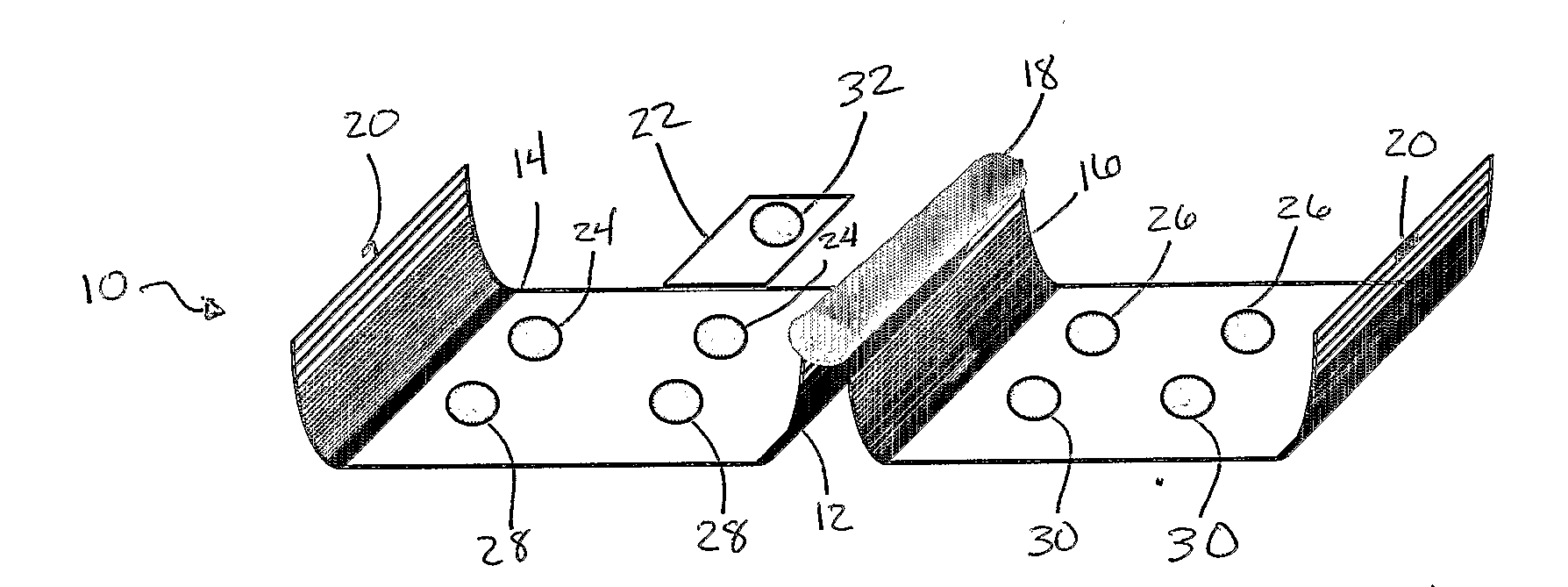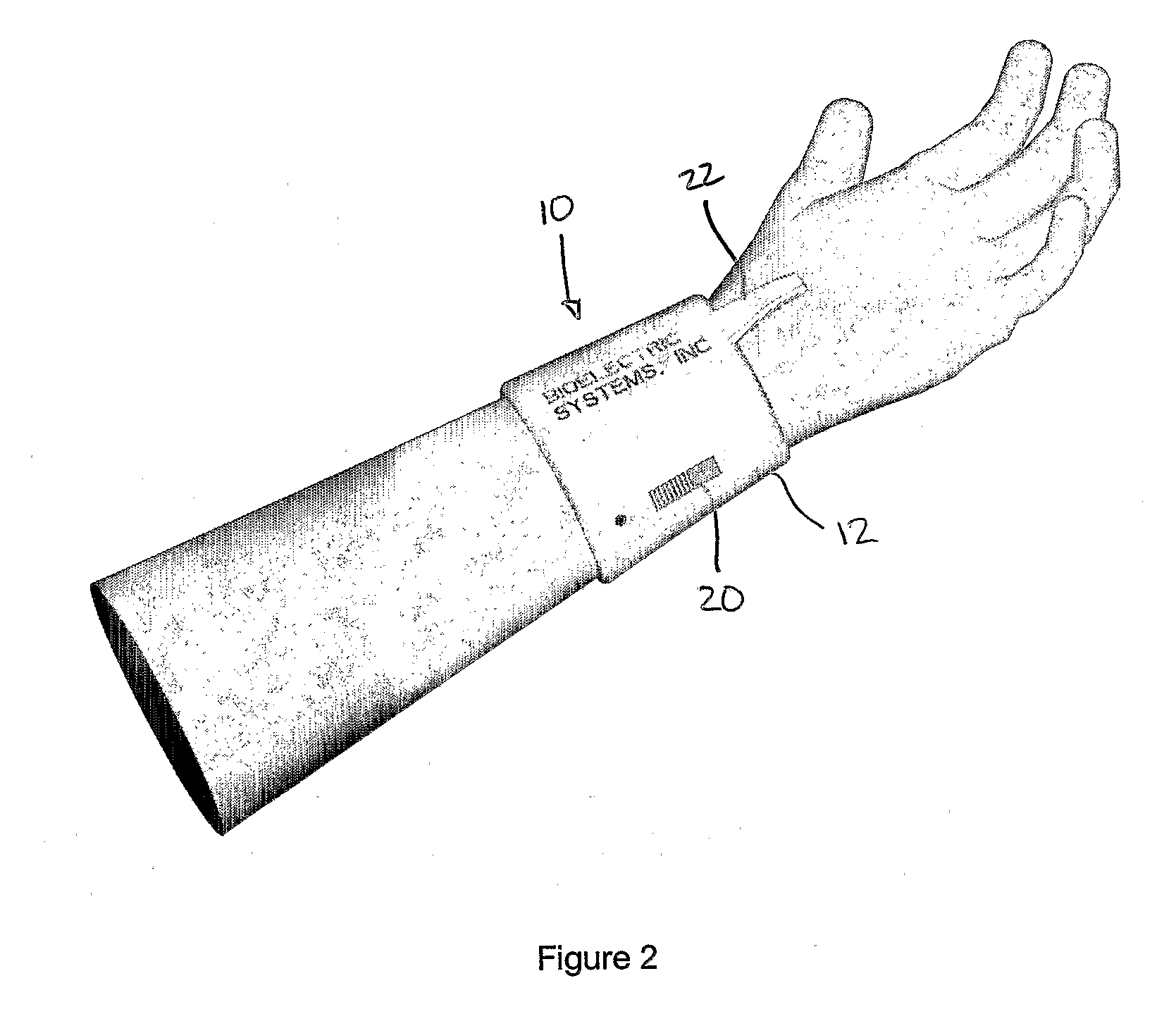Electrotherapeutic Device
a technology of electrotherapy and electrodes, applied in the field of electrotherapy devices, can solve the problems of numbness in the same area, pain in the thumb, index finger, and weakness of the hand muscles, and achieve the effect of facilitating the regeneration and healthy functioning of the medial nerv
- Summary
- Abstract
- Description
- Claims
- Application Information
AI Technical Summary
Benefits of technology
Problems solved by technology
Method used
Image
Examples
Embodiment Construction
[0030]As shown in the drawings for purpose of illustration, the current invention is concerned primarily with an improved electrotherapy device, generally designated in the accompanying drawings by the reference number 10. The device is specifically designed to be miniaturized, self-contained, and capable of affecting a plurality of different stimulation pulse modes for treating carpal tunnel syndrome (CTS).
[0031]In accordance with the present invention, and as illustrated in FIGS. 1a and 1b, and applicable with respect to the preferred embodiment, the improved electrotherapy device 10 generally comprises a housing 12, which preferably further comprises a ventral-half 14 (i.e., fitting with the palmar side of the wrist) and a dorsal-half 16 (i.e., fitting with the back side of the wrist).
[0032]The housing 12 is in the form of a hinged sleeve adapted to fit around (conform anatomically to) the affected wrist and further comprises an extension to contact the palm. In the preferred emb...
PUM
 Login to View More
Login to View More Abstract
Description
Claims
Application Information
 Login to View More
Login to View More - R&D
- Intellectual Property
- Life Sciences
- Materials
- Tech Scout
- Unparalleled Data Quality
- Higher Quality Content
- 60% Fewer Hallucinations
Browse by: Latest US Patents, China's latest patents, Technical Efficacy Thesaurus, Application Domain, Technology Topic, Popular Technical Reports.
© 2025 PatSnap. All rights reserved.Legal|Privacy policy|Modern Slavery Act Transparency Statement|Sitemap|About US| Contact US: help@patsnap.com



